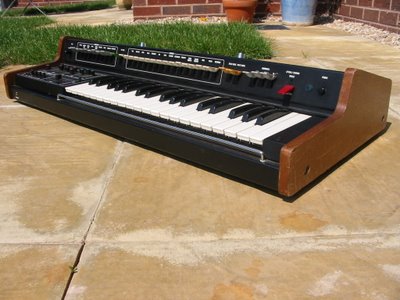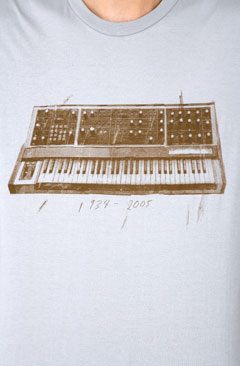
Via Peter Grenader on the Plan B list:
"All this talk, so where's the bacon? I've posted some sound samples of the M24 doing it's thing. Go
here and scroll to Sound Samples. the Model 24 will be shipping in two weeks.
enjoy.
- P"
Update via Peter in the comments:
"For the record:
1) The M24 IS NOT BASED ON BUCHLA'S DESIGNS other than their function. It's microprocessor based.It's not based on anyone's design, the circuit is completely unique inside. Have a look at the block diagram on the M24 page of the EAR site, you'll see what I'm talking bout.
2) The M12 iis NOT a clone of anything. Buchla's filter is state variable, but a completely different architecture. Mine has four modes, Don's has one...they both use Vactrols, as does Dieter's Stweiner Filter. If you feel you must credit me for 'borrowing', then credit Don Lancaster - because the M12 came from reading his filter cookbook that I borrowed from Mike Brown. That's the only borrowing that went into that one.
3) The M13 is close to the Buchla 292 - but there are some significant changes in play there, namely an added opamp feedback which greatly improved it's functionality for non-Buchla signal levels."
"On 'clones'
Adaptations are nothing new. The point has been made about the many many Moog Ladder clones, but let's not overlook the Wiard Wogglebug and the Buchla 266 as well as the Wiard Borg and the Buchla 292, Banalogue's full product line, the Livewire and Cynthia Steiner filters, The Cynthia and Doepfer Wasp, The Livewire Bissell Gen, the list goes on and on.
And while the Model 13 is the only circuit adaptation in our line, so is the Cynthia Lowpass Gate (I know because I designed that circuit) and the Wiard Borg, although I don't see comments about either of these.
Add to the mix that well over 60% of the new analog instruments being released today are based on circuits published in Electronotes. The only function in the entire Plan B line that can be found in Electronotes is the sine shaper in the Model 15, but that was only an Electronotes reprint of a circuit originally published in an article Electronics Magazine in the mid-sixties and was done so as an appnote - meaning they intended for people to use it, that's why it was there.
More on this, the M24 is functionally similar to the Buchla 266 as it produces a stepped and smooth random state (and a bunch of toehr stuff).Well, so does the Wogglebug, the Doepfer A149-1(half of the 266 anyway), The Doepfer A-118 (the other half), the Serge Random Voltage Gen...but we all went about it differently and we all included unique features not in the original. Clearly a 'how would I make something that has this function among others' as opposed to 'how to I make a 266 clone' approach on all counts.
For the record however, I personally asked Buchla and Associates if they would have a problem with this and their reply was no, 'everyone needs a wiggley voltage'."
 "To do this, two Multi-Traks were used, one with a bad keyboard. The aluminum case was cut on one of the cases and its top was piggy backed on to the multi-trak with a good keyboard. The master controls the slave via midi which includes sequencer control. Still has 16 individual voice outputs and four 'mixed' outputs. A custom cable was made to join outputs into a single mono or stereo output for both synthesizers."
"To do this, two Multi-Traks were used, one with a bad keyboard. The aluminum case was cut on one of the cases and its top was piggy backed on to the multi-trak with a good keyboard. The master controls the slave via midi which includes sequencer control. Still has 16 individual voice outputs and four 'mixed' outputs. A custom cable was made to join outputs into a single mono or stereo output for both synthesizers."




















































